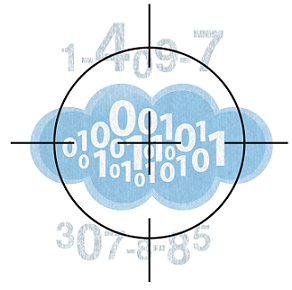USING DATA REPOSITORIES CORRECTLY
Please note: Not all data is intended to be disseminated. Before disseminating, the legal and ethical nature of the datasets should be analysed. A pragmatic approach that respects the principle of ‘as open as possible, as closed as necessary’ is recommended.
For more information, please refer to ‘Ouverture des données de recherche, analyse du cadre juridique en France » from INRAE (in French).
Depositing data in a data repository makes them visible, accessible, and available for citation in the same way as scientific publications.
There are different types of data repositories: thematic, multidisciplinary, institutional, publisher or research project specific.
For example :
- Zenodo was created by OpenAire and CERN to host research data for all disciplines
- DataDryad, a repository initially created for the life science field, is now open to all disciplines and hosts data attributed to articles and journals
Choosing a repository depends on the nature of the data, the research project from which the data was produced and the intended objective for deposit. Please note that certain repositories impose reusability conditions that do not confirm with open access.
Here is a selection of links to help you:
- Re3Data, Registry of Research Data Repositories
- The ‘Dépôts et entrepôts’ factsheet (in French), from DoRANum
- The section ‘Choisir un entrepôt’ (in French) from the INRAE website
A Data Paper is an article published in peer-reviewed journal, with the aim of informing the scientific community of the existence and availability of a dataset. Its content describes the dataset and places it in context, with the aim of highlighting its reusability.
Data Papers can be published in classic journals or Data Journals.
You can find more information on the CNRS DoRANum platform, on the INRAE website ‘Où et comment publier un Data Paper’ (in French) or on the IRSTEA website ‘Publier un Data Paper’ (in French).
Metadata
Metadata are used to describe resources. The use of standardised metadata allows the sharing and circulation of data. Using quality descriptive metadata will ensure that the data is understandable and can be reused.
You can find more information using the ‘Métadonnées, standards, formats’ factsheet (in French) on DoRANum
Persistent identifiers
When sharing a dataset, it should have a persistent identifier to enable easy access, reuse, and accountability.
A DOI (Digital Object Identifier) should be assigned to your datasets. Most data repositories generate a DOI automatically when the dataset is deposited.
You can find more information using the ‘Identifiants pérennes’ factsheet (in French) on DoRANum
Storing and archiving
To ensure that data will be conserved and accessible in the long term, technological obsolescence should be anticipated by favouring open technologies, sustainable formats and by diversifying the formats used.
You can find more information using the ‘Stockage et archivage’ factsheet (in French) on DoRANum




